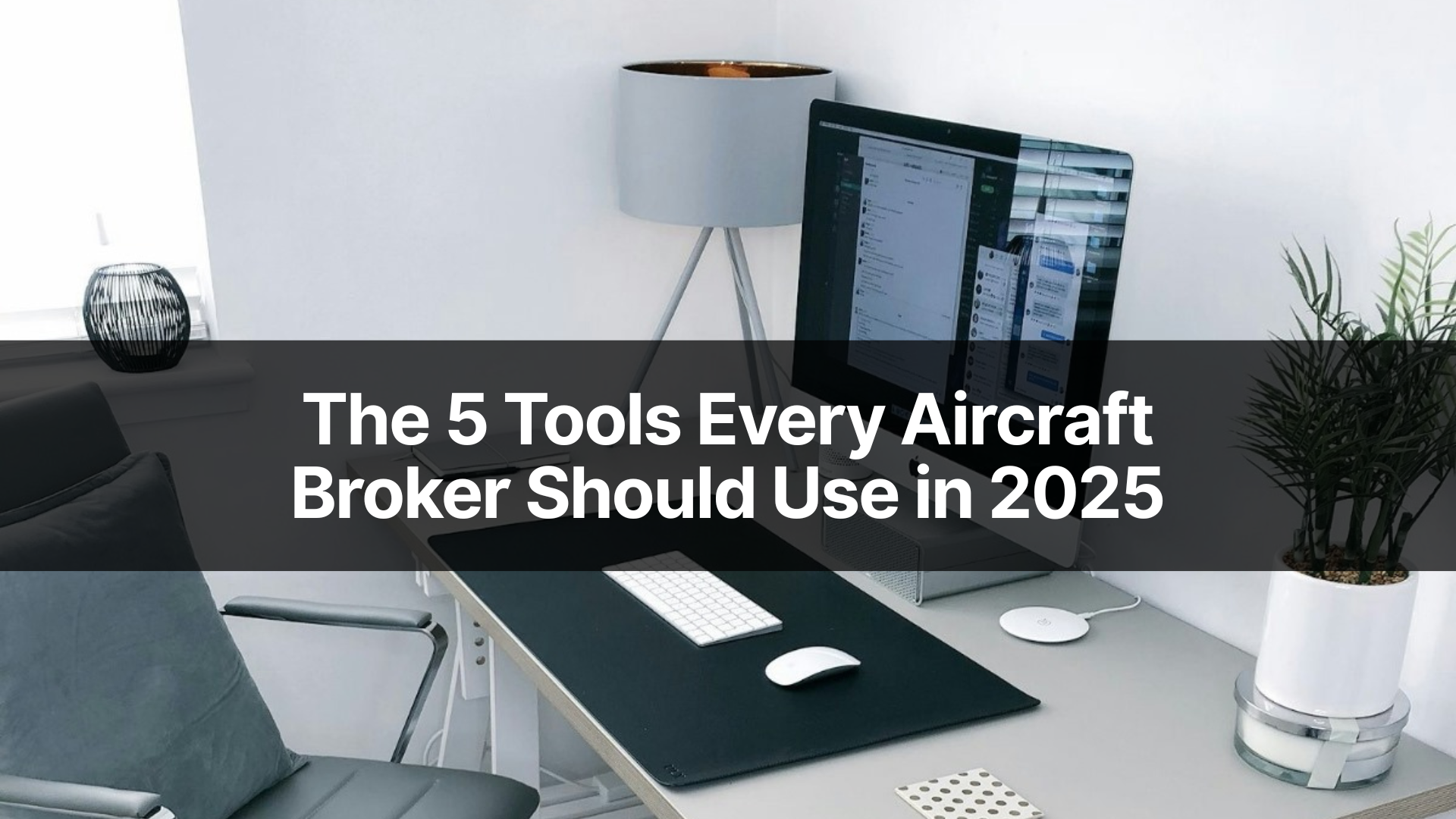The 5 Tools Every Aircraft Broker Should Use in 2025
By Keanu Diez, ABA Member.
Aircraft brokerage isn’t just about knowing aircraft specs or having a nice handshake. If you want to compete—and actually close deals—you need the right tools. Not having them will cost you time, clients, and credibility.
Here are five tools every serious aircraft broker should have in 2025:
1. Market Data Subscriptions
If you’re trying to price or value an aircraft using random Controller listings, you’re flying blind. You need accurate data on:
- Aircraft sales prices
- Days on market
- Historical trends
- Off-market movement
What to use: JetNet, AMSTAT, or VREF.
These aren’t cheap, but if you’re serious about brokerage, they pay for themselves when you price listings correctly, negotiate confidently, and prove your value to clients.
2. A Proper CRM
Aircraft brokerage is a relationship business. If you’re managing leads in a notebook or your phone contacts, you’re missing follow-ups and losing deals.
A CRM helps you:
- Track prospects and active buyers
- Schedule follow-ups
- Document notes from calls
- Segment by buyer type or aircraft interest
What to use: HubSpot, Pipedrive, or even a tailored aviation CRM like Aerolytics.
The goal isn’t complexity; it’s consistency. A CRM will keep your pipeline moving and prevent you from forgetting the buyer you spoke to three months ago who’s finally ready.
3. Photo & Video Tools
Listings with bad photos are listings that sit. Period. You don’t need to be a pro photographer, but you do need:
- A decent camera or phone with stabilization
- Basic editing software for brightness and cropping
- Tools to create short walkaround videos
What to use:
- Lightroom or Snapseed for photo clean-up
- Canva for overlaying your logo and specs
- Your phone’s 4K camera with a gimbal for smooth walkarounds
High-quality visuals sell aircraft faster and build your reputation as a professional broker.
4. Listing Platforms
While market data tools help you price, listing platforms help you reach buyers.
What to use:
- Controller
- ASO (Aircraft Shopper Online)
- GlobalAir
- Your own website with SEO-friendly listings
The goal is to syndicate your listings to maximize exposure while maintaining consistent branding across platforms. Don’t just upload photos; write clean, accurate descriptions and keep your listings updated.
5. Contract Templates & Document Management
Deals die when paperwork is sloppy or slow. Having clear, ready-to-use templates for:
- Listing agreements
- Commission agreements
- Letter of Intent (LOI) samples
- Bill of Sale samples
will save you and your clients headaches.
What to use:
- Template library from ABA (or develop your own with an aviation attorney)
- DocuSign or Adobe Sign for digital signatures
- Google Drive or Dropbox for organized, shareable document storage
Bottom Line
Aircraft brokerage is a competitive business, and your success depends on having the right tools:
- Market Data Subscriptions
- CRM
- Photo & Video Tools
- Listing Platforms
- Contract Templates & Document Management
Investing in these isn’t optional if you’re serious about growing your business, closing more deals, and building a reputation as a professional.
Ready to Start?
At ABA, we’re committed to training the next generation of aircraft brokers. If you’re serious about entering the industry the right way, check out our mentorship program, resources, and broker community.
About the Author
Keanu Diez is an ABA member and active aircraft broker, helping clients buy and sell aircraft efficiently while mentoring new brokers on building sustainable, professional businesses in aviation.
